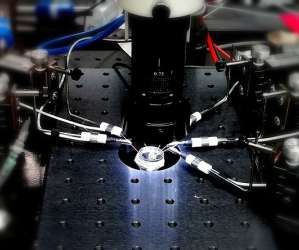OSU team demonstrates concept of potassium-air battery as alternative to lithium-air systems
Green Car Congress
FEBRUARY 18, 2013
Researchers at Ohio State University (OSU) have demonstrated the concept of a potassium-air (K?O O 2 battery (0.5 M KPF6 in DME) at a current density of 0.16 The dash lines indicate the calculated thermodynamic potentials for the batteries. Credit: ACS, Ren and Wu. Click to enlarge. O 2 ) battery with low overpotentials.






















Let's personalize your content